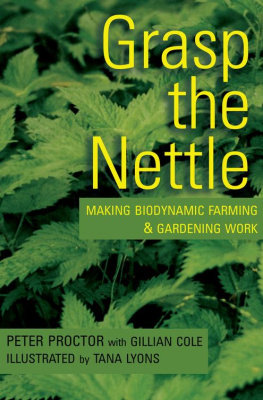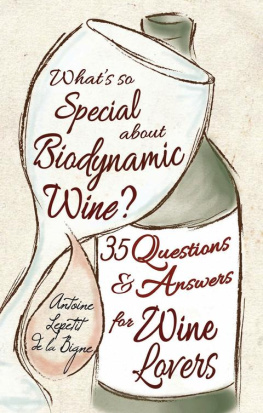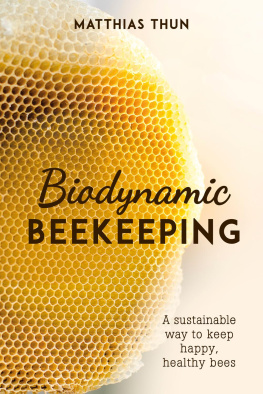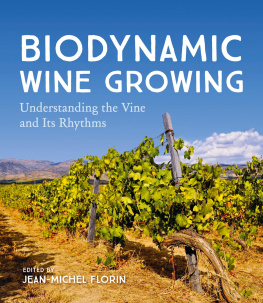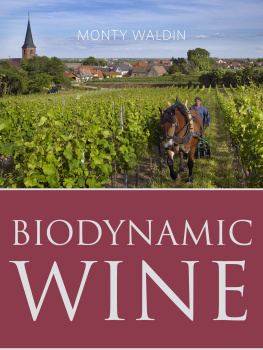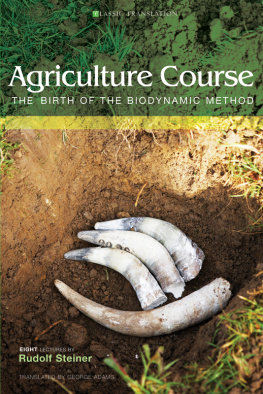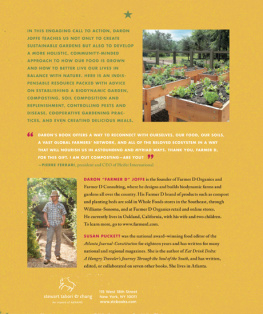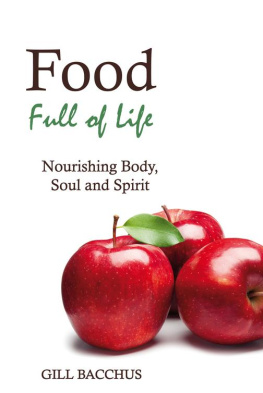In this revised and updated edition of Grasp the Nettle, Peter Proctor outlines how to apply biodynamic methods of farming and gardening to a wide range of conditions. Biodynamic farming is an ecological, self-supporting farming system which has no adverse environmental effects. It promotes soil enrichment and conservation.
Peter Proctor provides practical observations and biodynamic techniques, tips on how to recognise healthy soil and pasture, and how to make biodynamic preparations. This edition includes new ideas on applying the preparations; appendices on understanding the planting calendar and the influence of the planets; and covers recent advances in biodynamic practice and techniques in New Zealand, Australia and India.
This book aims to assist biodynamic farmers and gardeners to observe the processes of life and growth, and to understand how these processes are governed by cosmic forces, so they can use this knowledge in applying their practical skills.
Peter Proctor, past national field advisor for the New Zealand BioDynamic Farming and Gardening Association, now teaches and advises farmers on biodynamic methods in New Zealand, Australia, India, Sri Lanka, Europe, the UK and the US. He has a diploma in horticulture from Massey University, 40 years experience in all aspects of agriculture and horticulture, and 30 years experience in biodynamic management.
Gillian Cole has a degree in agriculture, a diploma in biodynamic agriculture, and has worked in agricultural policy analysis and planning in Botswana and New Zealand.
Tana Lyons is an art therapist with considerable experience in live drawings of nature.
I feel special pleasure in writing a few lines to introduce this book and also to introduce the author. Peter Proctor leads an ordinary grihastra life surrounded by most of the worldly cares and responsibilities. He possesses a healthy body with an absolutely unassuming exterior. He has wedded spirituality to environmental and ecological farming.
His mission at this age of 68 years is to enlighten and train the farming communities , especially the youth of east and west alike. Peter has worked hard to promote biodynamic agriculture in Asian countries since 1993, and I feel he is having tremendous success in his endeavours.
I was given training in biodynamic agriculture by Peter in Hawkes Bay in New Zealand in 1993, and since then I have worked with him and his colleagues in New Zealand, Australia, Bangladesh and India, to popularise biodynamic farming. Now Peter has adopted India as his second home and spends two to three months a year there, from south to north, from the Arabian Sea coast to the great Himalayas.
His role as a teacher is important it can never be overemphasised that it is the efficacy of the system and the calibre of the guru or teacher that count, and a mistake in the selection of these may render all effort in vain.
Grasp the Nettle is a treatise on the biodynamic agriculture system, and it deserves to be studied with close attention by those interested in spiritual, sustainable farming or ahimsakkheti (non-violent agriculture). One of the main objectives of biodynamics is to realise the truth depicted in the natural farming of the ancient sages and Veda, Upanishad and other scriptures of the Indian subcontinent.
To know the historical and philosophical background of a movement is to know something substantial about its validity and potential effectiveness as well as why it advocates what it does. Biodynamic agriculture or farming is an ecological, self-supporting farming system rather than an industrial or chemical approach to the production of food. It has no adverse environmental effects and it promotes soil enrichment, conservation and construction. Soil is viewed as a complex and living entity and is considered the prime capital and wealth of the farmer.
Dr Rudolf Steiner in 1924 described what is now known as biodynamic agriculture, a new way of thinking about the relationship of the earth and the soil to the forces of the cosmos. He pointed out how the health of the soil, plants, animals and human beings depends upon bringing nature into connection with the cosmic creative shaping forces.
This book, Grasp the Nettle, is an attempt to present this knowledge in a way that should help the practitioner make biodynamic farming and gardening work. The chapters on observation of plants and their forms can introduce the reader to many other ways of furthering his awareness of plant life on the farm.
Peter bases his knowledge on a lifetime of gardening and farming, and in particular working at the Hohepa Homes in Hawkes Bay. He has brought the biodynamic concepts to many, many people, in temperate and in tropical countries.
This volume should be kept in the libraries of all those who are interested in practising holistic farming.
I wish every success and a healthy long life to the author to serve the world in the twenty-first century.
TGK Menon
Rural Agricultural Education Coordinator
Indore
January 1997
I first made and used the biodynamic Preparation 500 on the Hohepa farm near Napier in 1966. Having being a student of Rudolf Steiners work since the mid 1950s, I had learned about making 500 from Australian Robert Williams, who had been making it near Sydney since about 1938, and also from Alex Podolinsky. It is interesting to note that the first 500 in the southern hemisphere was made and applied by Bernard Crompton Smith in 1928 in Havelock North, New Zealand. Later the impulse was picked up by GB Winkfield, who made all the preparations after a trip to Switzerland, and subsequently shared his expertise with Robert Williams, who passed it back to farmers in New Zealand.
Many people were studying and working with biodynamics in the 1950s and later, and this has given a solid foundation to what is happening now, in the late 1990s. It was all pretty new to us in New Zealand at that stage. However, several people in Hawkes Bay at the time John Donaldson, Gheit Wiersmar, Shirley Wall, Michael Jackson, and Shirley and Clifford Harmer were noticing the change in soil structure and also the improvement in food quality after applying Preparation 500. In particular, John Donaldson was growing Sturmer apples and asparagus, and rearing poultry and pigs, and Gheit Wiersmar concentrated on carrots and potatoes. These products were my familys introduction to the wonderful taste of biodynamically grown food.
In 1973, when the late Tom Stevens, a dairy farmer from Kaukapakapa, was encouraged by his daughter Ina to come to Hohepa and tasted the Hohepa Golden Delicious apples, he wanted to use 500 on his cow paddocks. Why? Because, he said, if you can grow apples as sweet as that, I could grow grass thats as sweet and he did!
Tom was, at that point, 72 years old. He had been dairy farming all his life and was considering retirement. But he equipped himself with a stirring machine and spray gear to apply the 500, and made a new start to his dairy farming. Tom was very impressed with the results he achieved, and loved showing people how his soil had improved.
Shortly after that, John Pearce and his wife Norrie, who as a child had been a neighbour of the Stevenses, paid them a visit while looking for ways to manage the farm they had recently bought. They quickly saw the advantages of biodynamic farming, which they applied to their 400-acre sheep and beef farm at Shelly Beach on the Kaipara Harbour in Northland.
One of the initial results from both these farms, which was a surprise to everyone, was that there were no cases of facial eczema in the sheep or cattle on either of their farms during a severe outbreak in Northland in the late 1970s. This outstanding result in animal health prompted a brief MAF investigation, but at that stage biodynamics was perhaps a little bit radical for many scientists and farmers!

